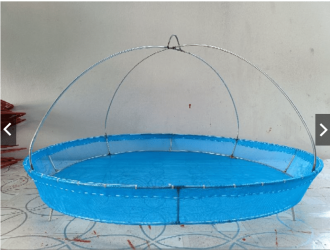DailyLunatic
New Member
A little background.
I'm in Thailand, so it's warm all the time. Temps is not an issue. I'm raising Tilapia in two 5x15m open air ponds, not any kind of hydroponic situation. Well water is being pumped into both ponds during daylight hours. Solar, so no additional costs for water or electricity. I do not do a full harvest and do not intend to do so. Meaning that I use a perpetual method of taking only the larger fish, and keep the pond with mixed sizes. This allows for fresh fish throughout the year, but creates a problem...
Problem:
Over population. Tilapia breed very quickly, and long before a harvestable size. Thus, I have many more times the number of fish the pond can sustain comfortably. I do not discourage the Egrets, or King Fishers, and actually enjoy the bird watching. I've tried ducks to keep the population under control, but wife did not care for the way they soiled the benches and walkways (they are now caged). Besides they seemed more interested in the fish food than in the actual fish.
I have heard that predator fish can be introduced (i.e. Catfish) but that they work best if the pond is drained and all fish harvested on a regular basis, else they end up taking over the pond. I can't find Bass here. I will keep looking. Maybe they consider them to be an invasive species...
What suggestions do you have for this issue?
-sterling
I'm in Thailand, so it's warm all the time. Temps is not an issue. I'm raising Tilapia in two 5x15m open air ponds, not any kind of hydroponic situation. Well water is being pumped into both ponds during daylight hours. Solar, so no additional costs for water or electricity. I do not do a full harvest and do not intend to do so. Meaning that I use a perpetual method of taking only the larger fish, and keep the pond with mixed sizes. This allows for fresh fish throughout the year, but creates a problem...
Problem:
Over population. Tilapia breed very quickly, and long before a harvestable size. Thus, I have many more times the number of fish the pond can sustain comfortably. I do not discourage the Egrets, or King Fishers, and actually enjoy the bird watching. I've tried ducks to keep the population under control, but wife did not care for the way they soiled the benches and walkways (they are now caged). Besides they seemed more interested in the fish food than in the actual fish.
I have heard that predator fish can be introduced (i.e. Catfish) but that they work best if the pond is drained and all fish harvested on a regular basis, else they end up taking over the pond. I can't find Bass here. I will keep looking. Maybe they consider them to be an invasive species...
What suggestions do you have for this issue?
-sterling



